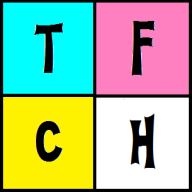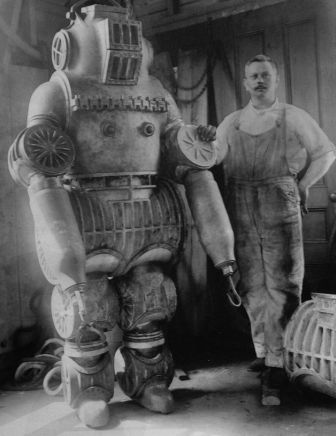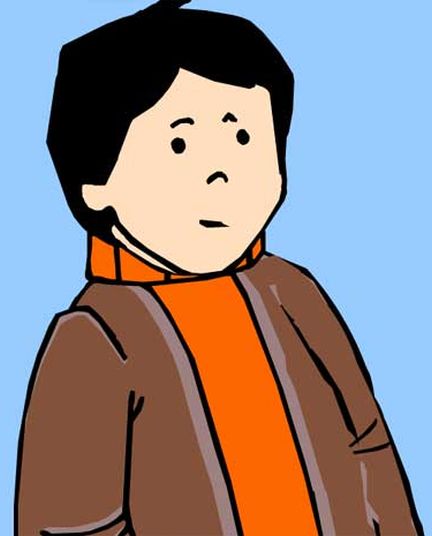Remember The Four Color Hack?

About two months ago, Max Traver e-mailed me and asked some great questions about The Four Color Hack. Then, life happened, and I never got around to answering any of those questions. So, here goes.
I may have asked this before, but the instructions for rolling a D16 seem off to me. As it stands, if the D6 comes up 4, 5, or 6, we are to add 4 to the result of the D8. However, if I roll an 8, then a 6, add 4 to the 8, wouldn’t the result be 18? Shouldn’t we add 2 to the D8, not 4?
Somehow somewhere something crucial got lost in translation. Rolling a d8 and a d6 to simulate a d16 is Official Old School. It hearkens way back to when I first started gaming and d20s weren’t numbered 1 through 20, but were numbered 0 through 9 twice. So, in order to generate 1 to 20, the d6 determined whether you added 10. The d8-and-d6 trick follows the same concept. I roll both. If the d6 equals 4-6, then I add 8 to the d8. For example:
* Roll 1: d8 = 4; d6 = 2. Result = 4.
* Roll 2: d8 = 4; d6 = 5. Result = 12, because I added 8 to the 4.
* Roll 3: d8 = 8; d6 = 1. Result = 8.
* Roll 4: d8 = 8; d6 = 6. Result = 16, because I added 8 to the 8.
Vigor is described as “working like hit points,” but then Vigor is also described as allowing a Hero to “ignore this much damage from an attack.” It is also mentioned that Vigor “recovers faster than hit points.” Overall, I’ve come away just a bit confused about how Vigor works in general.
This is just sloppy writing on my part. Vigor represents a number of bonus hit points that heroes recover much quickly than normal hit points. I need to clean up the verbiage in the rules. Mea culpa maxima.
“Body” is still used in place of “Hit Points” on pages 15 and 23.
More sloppiness, but this time with the editing. Mea culpa maxima.
How does this game handle Powers as the acting/resisting ability? Say, using Wind Control against Telekinesis to keep a car from being pushed off a bridge?
The short answer is that the hero makes a Stat check as normal. This might be modified by the Wind Controller’s level. Other factors may indicate that the hero rolls with Advantage or Disadvantage. If the hero succeeds, the car doesn’t get pushed off. If the hero fails, the car goes flying, and then hero gets a chance to catch it before it hits the icy river below.
How are binding powers (like Spidey’s webs, Wonder Woman’s lasso, etc) handled?
A binding power is used to create a lasting effect. Let’s say Wonder Woman has Golden Lasso d12. She can split that into Golden Lasso d10/d10. She could then bind Ares with one d10, and still have Golden Lasso d10 available for other purposes.
Are there rules for stunning effects?
A stunning effect could be simulated using the same lasting effect rules briefly described above.
Using Elements as Villains: other than “giving the Element a Level,” how does that work?
Assign the Element whatever abilities seem most appropriate, and then slot the Element into the initiative order. In short, the Element itself gets treated like a villain or a minion.
Do Villains ever downgrade their Power Dice, the way Heroes have to downgrade their Hero Dice?
This is one area that I neglected. Not sure how. In short, Villains can use their Power Dice for automatic successes, et cetera, just like a Hero can. In those instances, the Power Dice would downgrade. Villains can also split their Power Dice to create lasting effects, et cetera.
And finally: How Brutacles D10 for his Powers broken down? Specifically, how did his Ball and Chain end up with a 2D6 + 1D8 rating?
I broke Brutacles’s d10 into 2d8, and then broke 1d8 into 2d6, giving him 1d8 and 2d6. A d6 got used for Ball-and-Chain, and another d6 got used for Brutal Armor. The d8 went for Mutagenic Steroids. Brutacles’s Ball-and-Chain damage is d6 (base damage), d6 Power Die, and d8 Mutagenic Steroids due to his enhanced strength and aggression. When facing Brutacles, it behooves Heroes to disarm him and/or put him into situations where his Mutagenic Steroids enhancements cannot be brought to bear.


